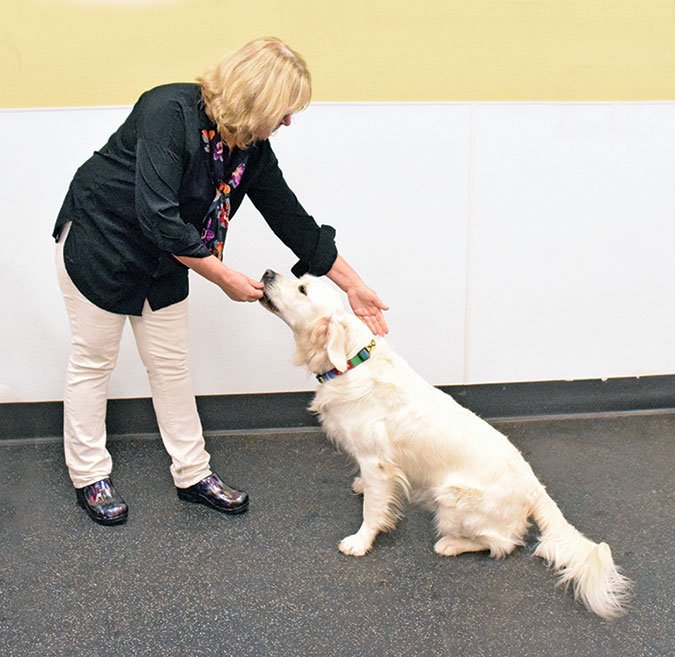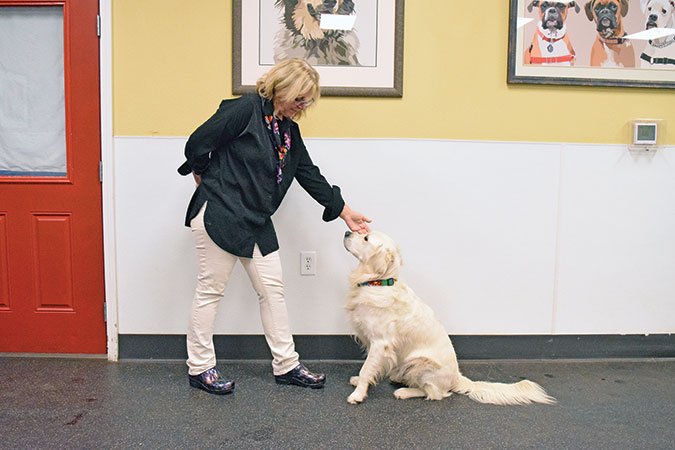[Updated January 31, 2019]
While we discus collars in the December 2017 issue, let’s also take a moment to talk about collar grabs. I see a worrisome number of dogs who duck away when their human reaches for their collar. This is not only annoying for the human, it is also dangerous. Imagine what happens in an emergency, when the owner needs to quickly corral the dog to keep her out of danger, and the dog ducks away from the reaching hand and runs off.
If your dog has a positive association with being reached for, it could save her life. It’s easy enough to teach with most dogs and well worth the effort. All you need is a supply of tasty treats, and your dog, wearing a collar. Here’s how:
1. Move one hand toward your dog. Feed a treat from the other hand while your first hand stays in place. Remove both hands at the same time and hide them behind your back.

If your dog moved away when you did this or otherwise had a negative reaction (such as a nervous nose-lick, as seen in the photo), you moved your hand too close to her, or too quickly. Move your hand less and more slowly on the next trial.
2. Repeat many times, until, when you present your “reach” hand, your dog looks for the “treat” hand to appear. This “look” is called a conditioned emotional response, or CER.

3. When your dog consistently offers the desired CER at the distance of your original reach, reach a little farther next time. Keep working at the shorter reach distance until you consistently get the desired CER.
4. Gradually move your reaching hand closer and closer, getting the desired CER at each new reach distance, until you can touch, and then briefly grasp, your dog’s collar.

5. When she happily responds to you grasping her collar, ask other people to do the same exercise. Have the person start at Step 1, until your dog is happy about anyone reaching for her (in case she gets away from you and someone else tries to catch her).





